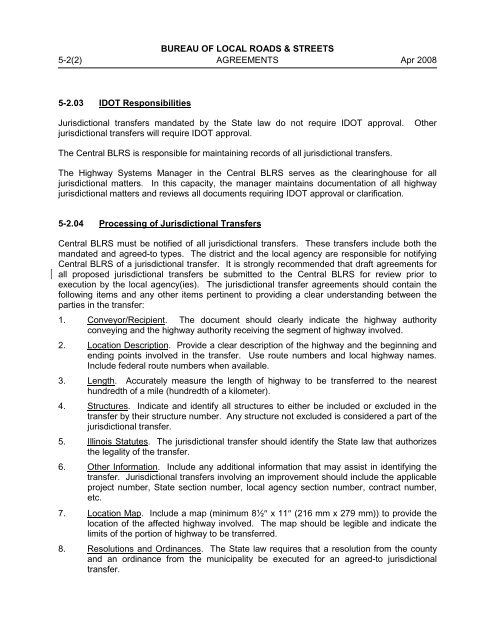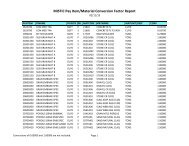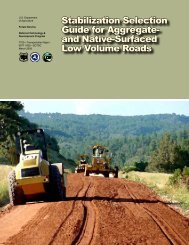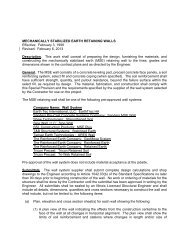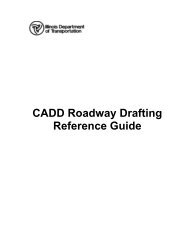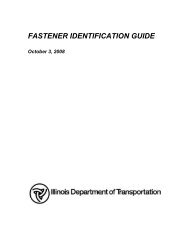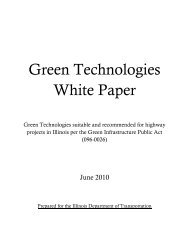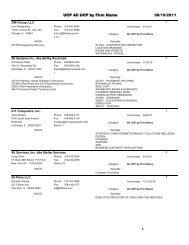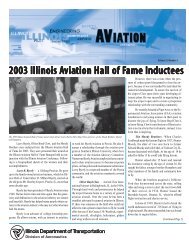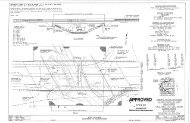Chapter Five AGREEMENTS - Illinois Department of Transportation
Chapter Five AGREEMENTS - Illinois Department of Transportation
Chapter Five AGREEMENTS - Illinois Department of Transportation
Create successful ePaper yourself
Turn your PDF publications into a flip-book with our unique Google optimized e-Paper software.
BUREAU OF LOCAL ROADS & STREETS<br />
5-2(2) <strong>AGREEMENTS</strong> Apr 2008<br />
5-2.03 IDOT Responsibilities<br />
Jurisdictional transfers mandated by the State law do not require IDOT approval. Other<br />
jurisdictional transfers will require IDOT approval.<br />
The Central BLRS is responsible for maintaining records <strong>of</strong> all jurisdictional transfers.<br />
The Highway Systems Manager in the Central BLRS serves as the clearinghouse for all<br />
jurisdictional matters. In this capacity, the manager maintains documentation <strong>of</strong> all highway<br />
jurisdictional matters and reviews all documents requiring IDOT approval or clarification.<br />
5-2.04 Processing <strong>of</strong> Jurisdictional Transfers<br />
Central BLRS must be notified <strong>of</strong> all jurisdictional transfers. These transfers include both the<br />
mandated and agreed-to types. The district and the local agency are responsible for notifying<br />
Central BLRS <strong>of</strong> a jurisdictional transfer. It is strongly recommended that draft agreements for<br />
all proposed jurisdictional transfers be submitted to the Central BLRS for review prior to<br />
execution by the local agency(ies). The jurisdictional transfer agreements should contain the<br />
following items and any other items pertinent to providing a clear understanding between the<br />
parties in the transfer:<br />
1. Conveyor/Recipient. The document should clearly indicate the highway authority<br />
conveying and the highway authority receiving the segment <strong>of</strong> highway involved.<br />
2. Location Description. Provide a clear description <strong>of</strong> the highway and the beginning and<br />
ending points involved in the transfer. Use route numbers and local highway names.<br />
Include federal route numbers when available.<br />
3. Length. Accurately measure the length <strong>of</strong> highway to be transferred to the nearest<br />
hundredth <strong>of</strong> a mile (hundredth <strong>of</strong> a kilometer).<br />
4. Structures. Indicate and identify all structures to either be included or excluded in the<br />
transfer by their structure number. Any structure not excluded is considered a part <strong>of</strong> the<br />
jurisdictional transfer.<br />
5. <strong>Illinois</strong> Statutes. The jurisdictional transfer should identify the State law that authorizes<br />
the legality <strong>of</strong> the transfer.<br />
6. Other Information. Include any additional information that may assist in identifying the<br />
transfer. Jurisdictional transfers involving an improvement should include the applicable<br />
project number, State section number, local agency section number, contract number,<br />
etc.<br />
7. Location Map. Include a map (minimum 8½″ x 11″ (216 mm x 279 mm)) to provide the<br />
location <strong>of</strong> the affected highway involved. The map should be legible and indicate the<br />
limits <strong>of</strong> the portion <strong>of</strong> highway to be transferred.<br />
8. Resolutions and Ordinances. The State law requires that a resolution from the county<br />
and an ordinance from the municipality be executed for an agreed-to jurisdictional<br />
transfer.


